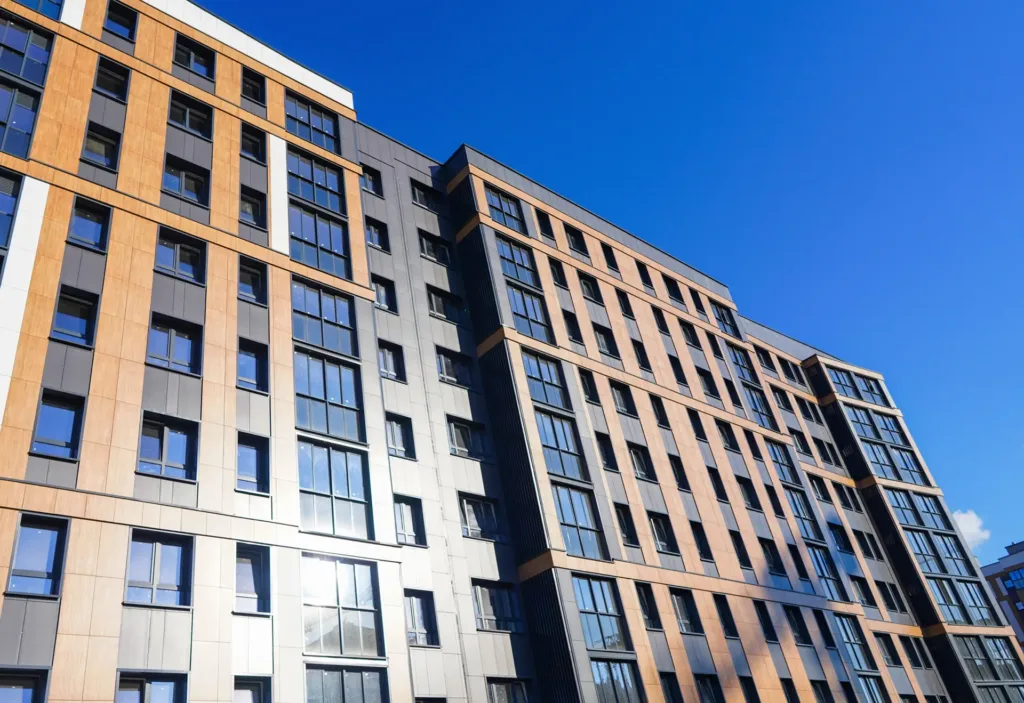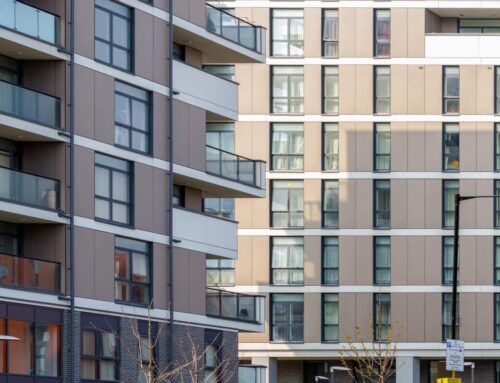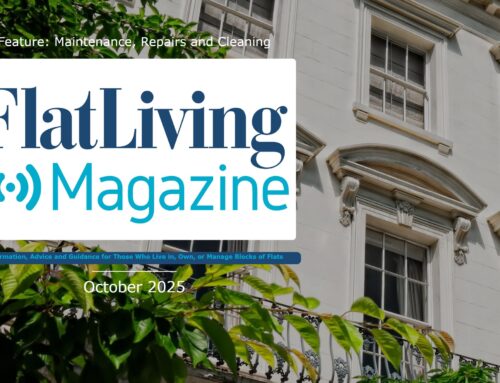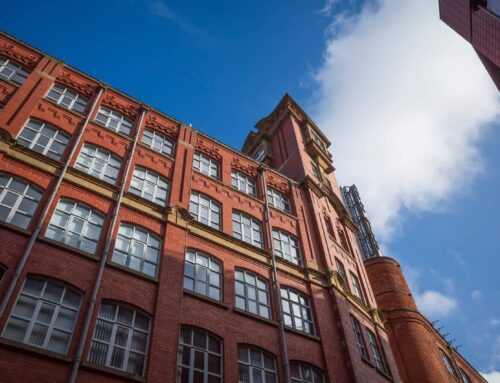Belinda Bagnall from Residentsline Insurance, explains the difference between leasehold and freehold ownership, how the two styles of home ownership came about and the pros and cons of leasehold ownership in 2024.
With so much in the news in recent years about leaseholders and changing regulations in the leasehold sector, most people will now be familiar with the term. But what does “leasehold” actually mean?
The History of the Leasehold System
Think back to medieval times, when Lords owned the land gifted to them as their birthright. They owned every property on that land and “leased” the right to live in their properties to the commoners. This meant that, in exchange for rent or services, Lords would allow people to live in their houses and work the land as if it were their own, for the length of a lease.
The term “freeholder” was used in the 1089 Doomsday book to describe someone who owned land outright – we continue to use this term today. It is usually interchangeable with the terms “property owner” and “landlord”.
With the industrial revolution and the urbanisation of towns and cities, leasehold properties maximised profit for landlords, as well as creating multiple living quarters within one building. Landlords would own several flats within a house and lease each one out individually.
Long leases came into play in the 1920s, and the framework has remained largely unchanged ever since. The 1950s saw the introduction of blocks of flats, built to maximise capacity and produce long-term income for landowners. It was not until the 1990s that leaseholders were able to extend their leases. Before then, once a lease expired, leaseholders were effectively evicted.
The system is unbalanced by nature. The power has historically always been with the freeholder who could set the price and the terms of the lease to suit their needs with little input from the leaseholders themselves.
Freehold
Freehold ownership refers to ownership of an area of land and everything that is built on that land. A ‘freehold property’ is one which is owned by the same person who owns the land on which it is built; commonly referred to as the Landlord. Freehold ownership is unlimited, it is ongoing until sold by the landlord or passed on as inheritance.
Most houses in the UK are freeholder-owned. They are not subject to a lease and are simply owned until sold to another buyer.
Leasehold
Leasehold properties are built on land owned by a freeholder or landlord and the property is therefore leased to the leaseholder. Anyone who ‘buys’ a leasehold property owns the right to reside in the building or unit only, and only for the length of the lease.
Leaseholders do have the option to extend their lease to continue their residency, but it has been an expensive, tricky process up until recent regulatory changes.
Leasehold properties are usually flats. This is because freeholders purchase the land and multi-residency building, but lease out the individual units within the building. This creates long-term income for them and the costs of maintaining the building are passed to the leaseholders.
Positives of Owning a Leasehold Property
Leasehold properties are cheaper to buy than freehold properties and are largely looked after by the freeholder. The roof, communal areas and exterior will be repaired and maintained in line with the lease, so no unplanned major expenditure is likely to come your way. While the costs are recovered via your service charge, recent law changes have made demands much clearer and easier to challenge.
There are also controls around how much freeholders can spend on major works. The Section 20 consultation procedure will ensure that your service charge funds are handled appropriately if major works are required.
Many leasehold properties are part of apartment complexes which provide communal living and additional extras such as gyms, parking, swimming pools and gardens. Your freeholder will arrange the necessary insurance to protect the building and your investment.
For those interested in managing the maintenance of the building themselves, it is now easier than ever for leaseholders to come together and buy the freehold as a collective. It is also far easier to enact your Right to Manage, where the freeholder remains in place as the owner but the leaseholders run the management of the building.
Negatives of Owning a Leasehold Property
In addition to your mortgage, you will be subject to service charges. You may also be asked to contribute to a ‘reserve or sinking fund’ for major works such as roof repairs. Check your lease for details.
As your lease runs out, the value of your property decreases and extending the lease can be an expensive process. Many leaseholders face a bill of up to 20% of the property’s value. However, new regulations have set the standard lease extension term at 990 years, which means no more extensions within your lifetime.
You will have very little say in how the property is looked after; who is appointed to work on the premises, what colour the building is painted etc. Your unit is your responsibility, but the communal areas are looked after by the freeholder.
If you are a smoker or have a pet, you will need to find a leasehold property with a lease that allows this. You should also check the lease for rules around decorating your unit as some can have restrictions in place.
In Conclusion
For many, leasehold ownership is ideal. It allows for more stability than renting, meaning that people can afford to live in urbanised areas and expansive communities, while relieving owners of the large-scale maintenance that can come with freehold home ownership.
While the system is unbalanced by nature, things are improving and leaseholders now have more protections and rights than ever before. The Government has hinted at the complete abolishment of the system but there is no date in sight for this significant change.
The leasehold market is a historical and practical element of the UK’s housing market and has a place in providing affordable housing. While freeholders effectively hold the power and the title to the land, they are also faced with maintaining the building, adhering to extensive and ever-changing health and safety law and sourcing appropriate insurance for their buildings.
The balance of power is evening out and leaseholders can now take over the management of their buildings, extend their leases more cost effectively and have more oversight of the ways in which their service charges are spent. For some leaseholders, it is a good deal. Other may feel trapped and taken advantage of. It will really come down to individual situations and freeholder-leaseholder relationships.
Government Plans for Transitioning Leasehold to Commonhold
Our government has expressed commitment to reforming the leasehold system, with the ultimate aim of making commonhold ownership the primary form of tenure for flats and apartments in the future. These plans are following increasing concerns about the imbalance of power between leaseholders and freeholders. To this day many people purchasing a leasehold property don’t understand what they have purchased and the complexities and restrictions that are encompassed.
What is Commonhold?
Commonhold ownership allows individual property owners to own their flats outright while collectively owning and managing the communal areas and structure of the building. This system eliminates the need for a freeholder and long-term leases, giving residents full control over their properties and shared spaces. It is commonly used in countries such as the USA and Australia and is viewed as a fairer alternative to leasehold.
Government Initiatives and Proposals
The government has proposed several measures to encourage the adoption of commonhold, including:
- Simplifying the Transition Process: Plans to make it easier for leaseholders to convert their properties to commonhold by reducing costs and streamlining legal procedures.
- Legislation to Abolish New Leasehold Properties: Future laws may prevent developers from selling new-build flats as leasehold, mandating commonhold as the standard ownership model.
- Support for Existing Leaseholders: Providing guidance and financial support for leaseholders who want to collectively purchase their freehold or transition to commonhold.
- Improving the Commonhold Model: Reviewing and enhancing the current framework for commonhold to address concerns raised by property owners, such as dispute resolution mechanisms and management responsibilities.
Challenges to Implementation
While the government is eager to transition to commonhold, several obstacles remain:
- Lack of Awareness and Understanding: Commonhold is still relatively unknown in the UK, and many property owners are unfamiliar with its benefits and implications.
- Complexity of Conversion: Transitioning from leasehold to commonhold requires agreement from all stakeholders in a building, including the freeholder, which can be difficult to achieve.
- Financial Barriers: The cost of transitioning to commonhold may deter some leaseholders, even with government support.
What’s Next?
Although the government has not set a definitive timeline for the transition to commonhold, recent reforms to lease extension terms and enfranchisement rights indicate a gradual move toward a more balanced property ownership system. Future legislation is expected to pave the way for widespread adoption of commonhold, offering greater autonomy and fairness for property owners.
This shift is part of a broader effort to modernise our housing market, addressing historical approaches while promoting long-term sustainability and transpar





Leave A Comment